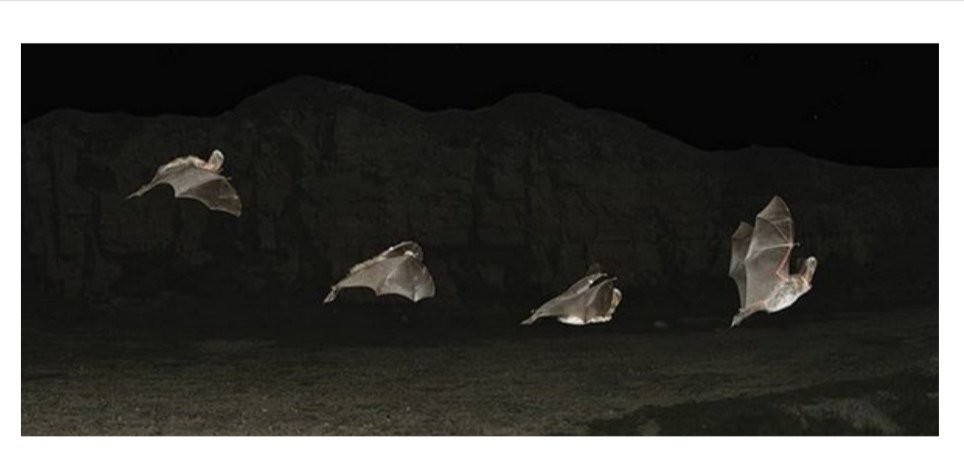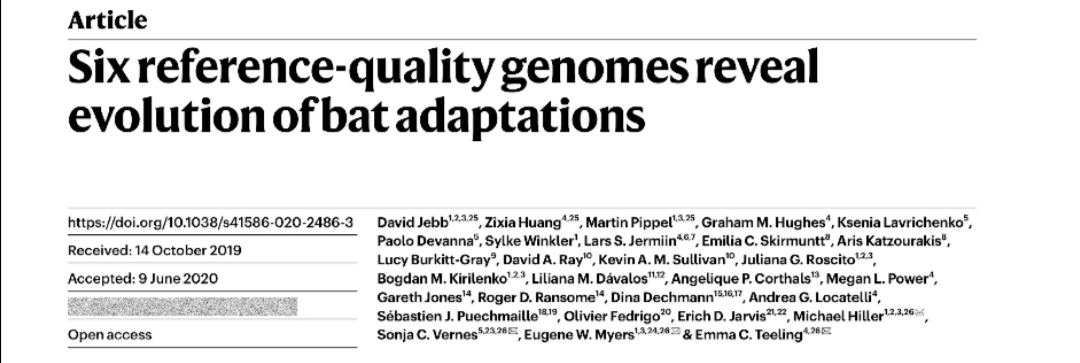Discover and read the best of Twitter Threads about #Annotation
Most recents (10)
🧵🧵 THREAD: 9 tips for successful #bioinformatics #projects 🧵🧵
1. Start by defining the aim, scope, and objectives of your project, and by identifying the #biological and #computational questions you want to answer.
2. Identify the #data sources, types, and formats, that are relevant and available for your project, and evaluate their quality, quantity, and suitability.
Nice piece in today's @insidehighered: “With Online Social Annotation, Students Read Together” by @susan_dagostino. It's a useful summary of recent #annotation and learning trends with great quotes from colleagues. Want additional context and resources? 🧵insidehighered.com/news/2022/10/1…
First, the IHE piece reviews a 2022 study co-authored w/ @EstebanMoralesV @FleerackersA & @juancommander. The study looked at undergrad students' knowledge construction when they participate in @hypothes_is social #annotation. It's #OpenAccess read it here ncbi.nlm.nih.gov/pmc/articles/P…
Our 2022 study extended a prior Kalir et al. 2020 article that found undergrad students across courses had favorable perceptions of social #annotation, specifically about positive contributions to their course community and learning. Read an open preprint: osf.io/nc5vs/
Excited to share a new pub with @EstebanMoralesV @FleerackersA @juancommander about undergrad students' knowledge construction via @hypothes_is social #annotation. And it's all open: the data, the article, the peer review (thx @F1000Research). Check it out f1000research.com/articles/11-23…
Our case concerns students’ online discussion via social #annotation. We studied 3 different undergrad courses, analyzed over 2,000 @hypothes_is annotations, identified patterns in how students constructed knowledge together, and discussed implications for instruction #EdResearch
Lots of #highered talk right now about the future of digital education, how students meaningfully collaborate, and how social reading practices—like #annotation—can help students learn online. Our study shows that asynch discussion can help students construct knowledge together.
Tips for authors and publishers to foster interaction with #OAbooks – a weekly COPIM 🧵 series
Chapter 2️⃣: Highlighting collaborative #opensource publishing platforms and authors & communities that have used #annotation workflows as part of their publishing process.
1/27
Chapter 2️⃣: Highlighting collaborative #opensource publishing platforms and authors & communities that have used #annotation workflows as part of their publishing process.
1/27
Scalar (@anvcscalar), developed by the Alliance for Networking Visual Culture (ANVC), provides options to annotate video, audio, images, source code, and text.
See their comprehensive introduction for an in-depth overview ⤵
2/27
scalar.usc.edu/works/guide2/h…
See their comprehensive introduction for an in-depth overview ⤵
2/27
scalar.usc.edu/works/guide2/h…
Scalar also provides access to its own API, through which one "can mashup your Scalar content with other data sources, build your own visualizations, or create completely new interfaces for your materials.”
3/27
scalar.usc.edu/works/guide2/w…
3/27
scalar.usc.edu/works/guide2/w…
Tips for authors and publishers to foster interaction with #OAbooks – a weekly COPIM 🧵 series
Chapter 1️⃣: open #annotation can enrich a document by enabling multifaceted conversation between a text and its audience.
1/20
Chapter 1️⃣: open #annotation can enrich a document by enabling multifaceted conversation between a text and its audience.
1/20
Kicking off this showcase with @hypothes_is – this #opensource project has evolved out of years of work undertaken in conjunction with the @w3c Web Annotation WG, and is nowadays featured in a variety of #openpublishing & #openeducation projects. #socialannotation
2/20
2/20
On a 🛠 technical level, a provision of plugins helps with the integration of hypothes.is functionality in a variety of platforms such as @WordPress, @omeka, or @pkp's Open Monograph System - platforms that are also used for #OAbook publishing
3/20
3/20
Ian Bogost has a nice look at the UI affordances and areas for growth in the e-reading space.
A🧵 of annotations
theatlantic.com/books/archive/…
A🧵 of annotations
theatlantic.com/books/archive/…
definition: bookiness
Does this only come out because there's something that's book-tangential or similar and it needs to exist to describe the idea of not-book, book-adjacent, or book-like on some sort of spectrum of bookishness.
hyp.is/jbsr7Bi2EeynDQ…
Does this only come out because there's something that's book-tangential or similar and it needs to exist to describe the idea of not-book, book-adjacent, or book-like on some sort of spectrum of bookishness.
hyp.is/jbsr7Bi2EeynDQ…
🧵I've been finally able to process and ruminate over Ss Final Self-Assessments in an intense 5-week summer comp. course that employs a *labor reflex* approach to #ungrading. Some lessons & observations:
✅Students are intrinsically motivated to learn (and even "unlearn"). 1/
✅Students are intrinsically motivated to learn (and even "unlearn"). 1/
✅ Reflective practice is critical for self-assessment and for locating areas for improvement.
✅ But Ss need time and practice to reflect fully & deeply.
✅ Ss possess more important and stronger goals for learning than can ever be established in the syllabus *outcomes*. 2/
✅ But Ss need time and practice to reflect fully & deeply.
✅ Ss possess more important and stronger goals for learning than can ever be established in the syllabus *outcomes*. 2/
✅ Definitely try out @Jessifer's approach to *epiphanies*. Ask Ss for those "aha" moments--you won't be disappointed!
✅ Some words used to describe initial reactions to #ungrading: "refreshing" "scared" "anxious" "skeptical" "worried" "love!" "excited" "shocked" "concern" 3/
✅ Some words used to describe initial reactions to #ungrading: "refreshing" "scared" "anxious" "skeptical" "worried" "love!" "excited" "shocked" "concern" 3/
If you work with #GraphQL and are CURIOUS on what the recently open source released Domain Graph Service framework by @NetflixEng is ? I have attempted a really short summary of the same below 🧵👇
#Annotation-Based : The framework’s core revolves around the annotation-based programming model familiar to Spring Boot developers. Just start the Spring Boot application, the /graphql endpoint along with the query editor on /graphiql endpoint will be available.
I’ve been using @hypothes_is for collaborative annotation of both primary and secondary sources since 2018. It is the best digital pedagogical tool I have encountered. Some things I’ve learned:
A 🧵 for those thinking of using #annotation in your Spring 21 courses.
1/
A 🧵 for those thinking of using #annotation in your Spring 21 courses.
1/
Like all online learning platforms and tools, it works best with instructor presence. If you’re annotating with the students, there will be a richer conversation and you will get to hear from more folks.
2/
2/
Pre-annotation is especially useful. Before posting a link to a piece for annotation, I add my own questions, comments, and reflections. I encourage students to reply to me (and each other) or add their own thoughts.
3/
3/
📢🎉The work of #Bat1K is featured on the cover in the latest issue of @nature: “Six reference-quality #genomes reveal evolution of #bat adaptations” 🦇🧬 #bats Our thread 👇 on the paper:nature.com/articles/s4158… 📸: Olivier Farcy(1/n) 

📢Have you ever wondered how 🦇 manage to do what they do? #bats have extraordinary adaptations, including powered #flight, laryngeal #echolocation, #vocal #learning and an exceptional #longevity with unique #immunity and resistance to #cancer! 📸: @DanielWhitby5 (2/n) 

A #Bat1K team led by @Sonja_Vernes @EmmaTeeling1 @hillermich @TheGeneMyers has just published the raw genetic material that codes for these unique 🦇 adaptations and #superpowers in @nature! #bats #genomics #cool! (3/n) 

